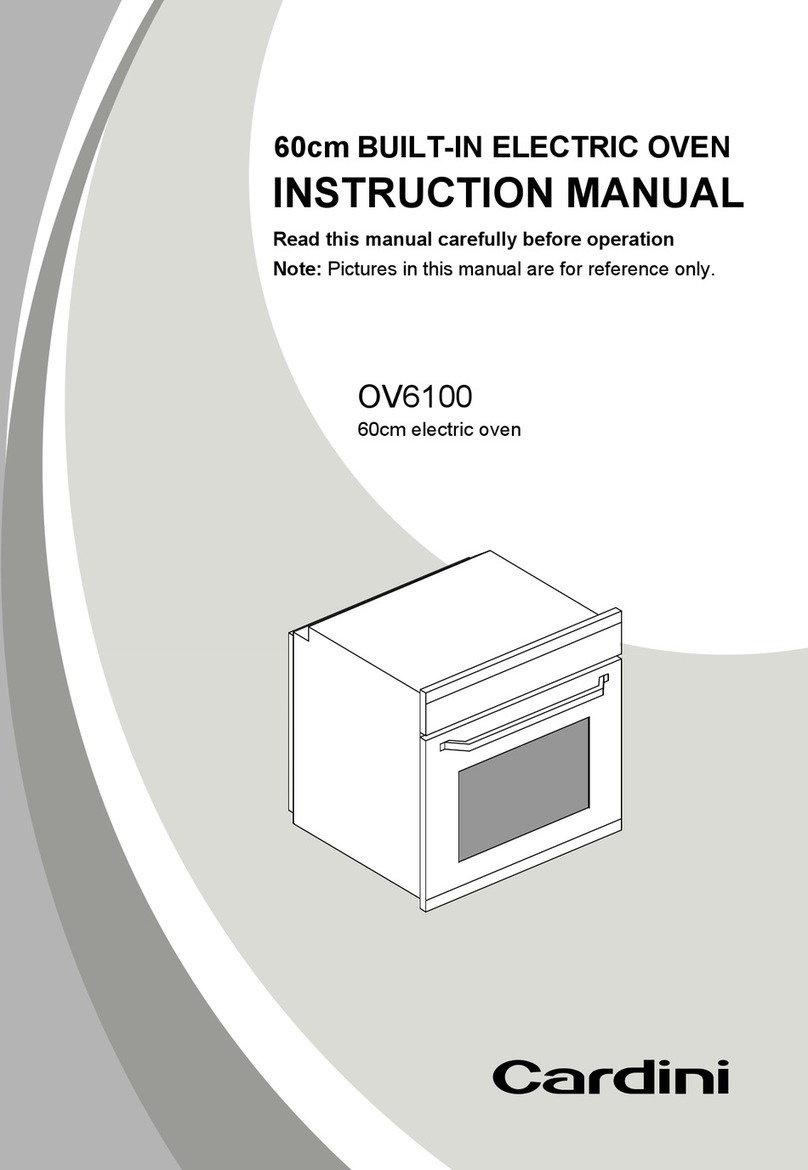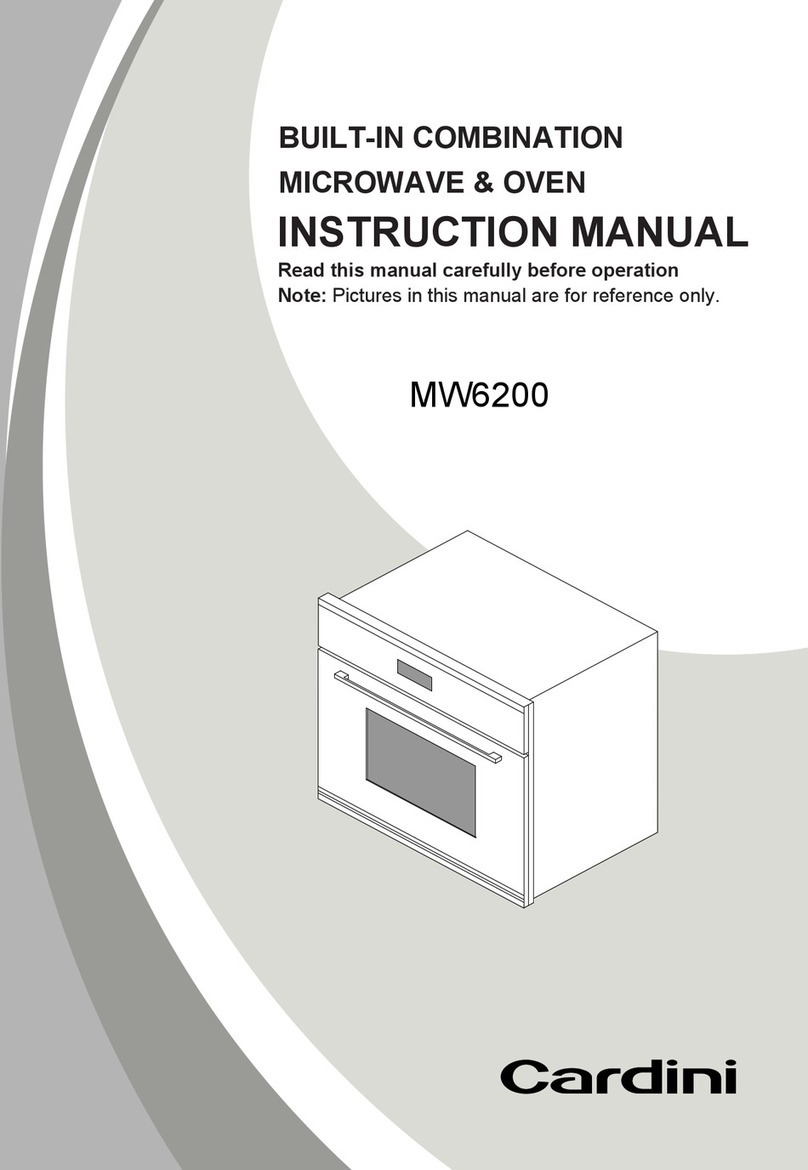
This appliance is for household use only and is not to be used outdoors.
Important: Before cleaning your oven or performing maintenance, disconnect it from the
power supply.
To extend the life of your oven it must be cleaned frequently, keeping in mind the following:
•Do not use steam equipment to clean the appliance.
•To protect against the risk of electrical shock, do not immerse the unit, cord or plug in water or
other liquid or spray water to clean the appliance.
•Don’t clean the appliance while it is still hot. The internal and external surfaces of the oven should
be cleaned by a damp cloth when it has cooled down.
•Wash all accessories in hot soapy water or in a dishwasher. Wipe dry with a paper or cloth towel.
•If you use your oven for an extended period of time, condensation may form. Dry it using a soft
cloth.
•There is a rubber seal surrounding the oven opening which guarantees its perfect functioning.
Check the condition of this seal on a regular basis. If necessary, clean it and avoid using abrasive
products or objects to do so. Should it become damaged, please contact your nearest after-sales
service centre. We recommend you avoid using the oven until it has been repaired.
•Never line the oven bottom with aluminium foil, as the consequent accumulation of heat could
compromise the cooking and damage the enamel.
•Clean the glass door using damp cloth and dry it with a soft cloth.
Do not use harsh abrasive cleaners or sharp metal scrapers to clean the oven door glass
since they can scratch the surface, which may result in shattering of the glass.
Replacing the Oven Lamp
•Cut off the supply of power to the oven by turning off the omni-polar switch (circuit breaker)
connecting it to the mains to avoid electric shock.
•Unscrew the glass cover attached to the lamp holder;
•Pull out the lamp and replace it with another high-temperature lamp (300°C certified for use in
ovens) with the following characteristics:
- Voltage: AC230V
- Wattage: 25W
- Socket: G9
•Remount the glass cover and reconnect the appliance to the power supply.
How to Keep your Oven in Shape
WARNING: Ensure that the appliance is switched off before replacing the lamp to
avoid the possibility of electric shock.
WARNING: Do not operate the appliance with a damaged cord or after the appliance
malfunctions or has been damaged in any manner. Return appliance to the nearest
authorised service centre for examination, repair or adjustment.
3































